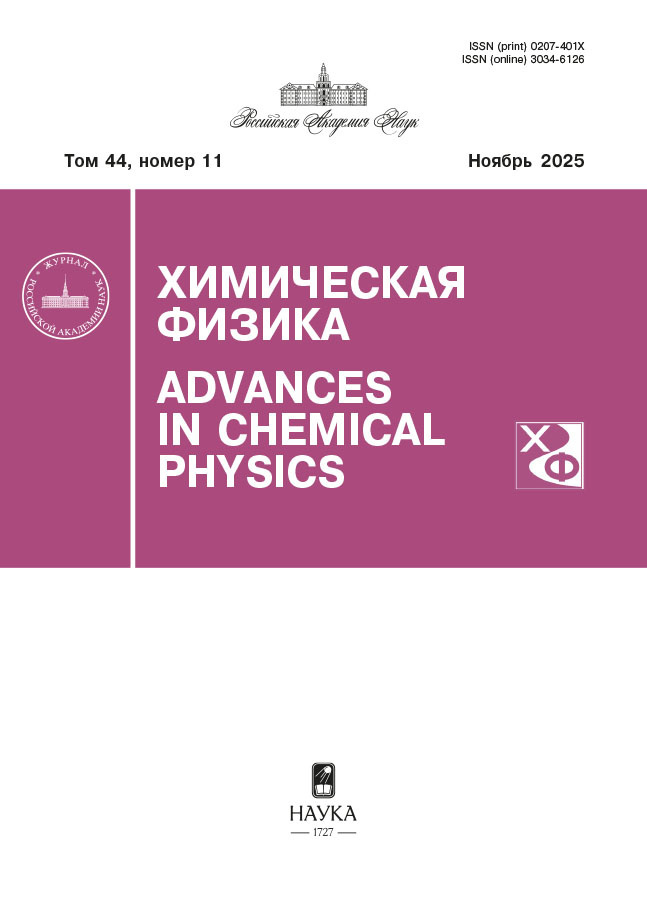Microwave properties of magnetically structured composite materials based on elastomeric matrices
- Авторлар: Fionov A.S.1, Khachaturov A.A.2, Fionova V.A.3, Kholodkova A.A.2, Kolesov V.V.1, Potapov E.E.2
-
Мекемелер:
- Kotelnikov Institute of Radio Engineering and Electronics
- MIREА – Russian Technological University
- Bauman Moscow State Technical University (National Research University)
- Шығарылым: Том 44, № 11 (2025)
- Беттер: 16-25
- Бөлім: Электрические и магнитные свойства материалов
- URL: https://journals.eco-vector.com/0207-401X/article/view/696396
- DOI: https://doi.org/10.7868/S0207401X25110036
- ID: 696396
Дәйексөз келтіру
Аннотация
Composite materials based on elastomeric matrices (chloroprene rubber of sulfur regulation and cold-cured polydimethylsiloxane) and magnetic fillers were obtained: hard magnetic (SmCo, NdFeB) and soft magnetic (natural magnetite Fe3O4, ZnNiCo ferrite) in the concentration range of 30–100 mass parts per 100 mass parts of the elastomeric matrix. The samples were molded both in the presence of a magnetic field up to 0.3 T and without it. As a result of studying the effect of structuring on the amplitude-frequency characteristics of the reflection coefficient (R) of samples in the frequency band 17.44–25.86 GHz, it was found that the amplitude and position of the of the attenuated R bands are determined by the composite formulation, and within the framework of one formulation, the anisotropy of the magnetization of the composite, which is determined by the nature of the distribution of the magnetic filler in the elastomeric matrix.
Авторлар туралы
A. Fionov
Kotelnikov Institute of Radio Engineering and Electronics
Email: asfionov@gmail.com
Moscow, Russia
A. Khachaturov
MIREА – Russian Technological University
Email: asfionov@gmail.com
Moscow, Russia
V. Fionova
Bauman Moscow State Technical University (National Research University)
Email: asfionov@gmail.com
Moscow, Russia
A. Kholodkova
MIREА – Russian Technological University
Email: asfionov@gmail.com
Moscow, Russia
V. Kolesov
Kotelnikov Institute of Radio Engineering and Electronics
Email: asfionov@gmail.com
Moscow, Russia
E. Potapov
MIREА – Russian Technological University
Хат алмасуға жауапты Автор.
Email: asfionov@gmail.com
Moscow, Russia
Әдебиет тізімі
- Tiwari M., Arya M.A., More P.V. et al. // J. Nanosci. Nanotechnol. 2020. V. 20. № 5. P. 2847. https://doi.org/10.1166/jnn.2020.17474
- Жуков А.М., Солодилов В.И., Третьяков И.В. и др. // Хим. физика. 2022. Т. 41. № 9. С. 64. https://doi.org/10.31857/S0207401X22090138
- Кириллов В.Е., Юрков Г.Ю., Коробов М.С. и др. // Хим. физика. 2023. Т. 42. № 11. С. 39. https://doi.org/10.31857/S0207401X23110043
- Robertsam A, Jaya N.V. // J. Nanosci. Nanotechnol. 2020. V. 20. № 6. P. 3504. https://doi.org/10.1166/jnn.2020.17404
- Deka B., Lee Y.-W., Yoo I.-R. et al. // Appl. Phys. Lett. 2019. V. 115. Article 192901. https://doi.org/10.1063/1.5128163
- Сvek M., Moucka R., Sedlacik M. et al. // Smart Mater. Struct. 2017. V. 26. P. 095005. https://doi.org/10.1088/1361-665X/aa7ef6
- Fionov A., Kraev I., Yurkov G. et al. // Polymers. 2022. V. 14. P. 3026. https://doi.org/10.3390/polym14153026.
- Хачатуров А.А., Фионов А.С., Колесов В.В. и др. // РЭНСИТ: Радиоэлектроника. Наносистемы. Информ. технологии. 2022. Т. 14. № 4. С. 415. https://doi.org/10.17725/rensit.2022.14.415
- Брандт А.А. Исследование диэлектриков на сверхвысоких частотах. М.: Физматгиз, 1963.
Қосымша файлдар









